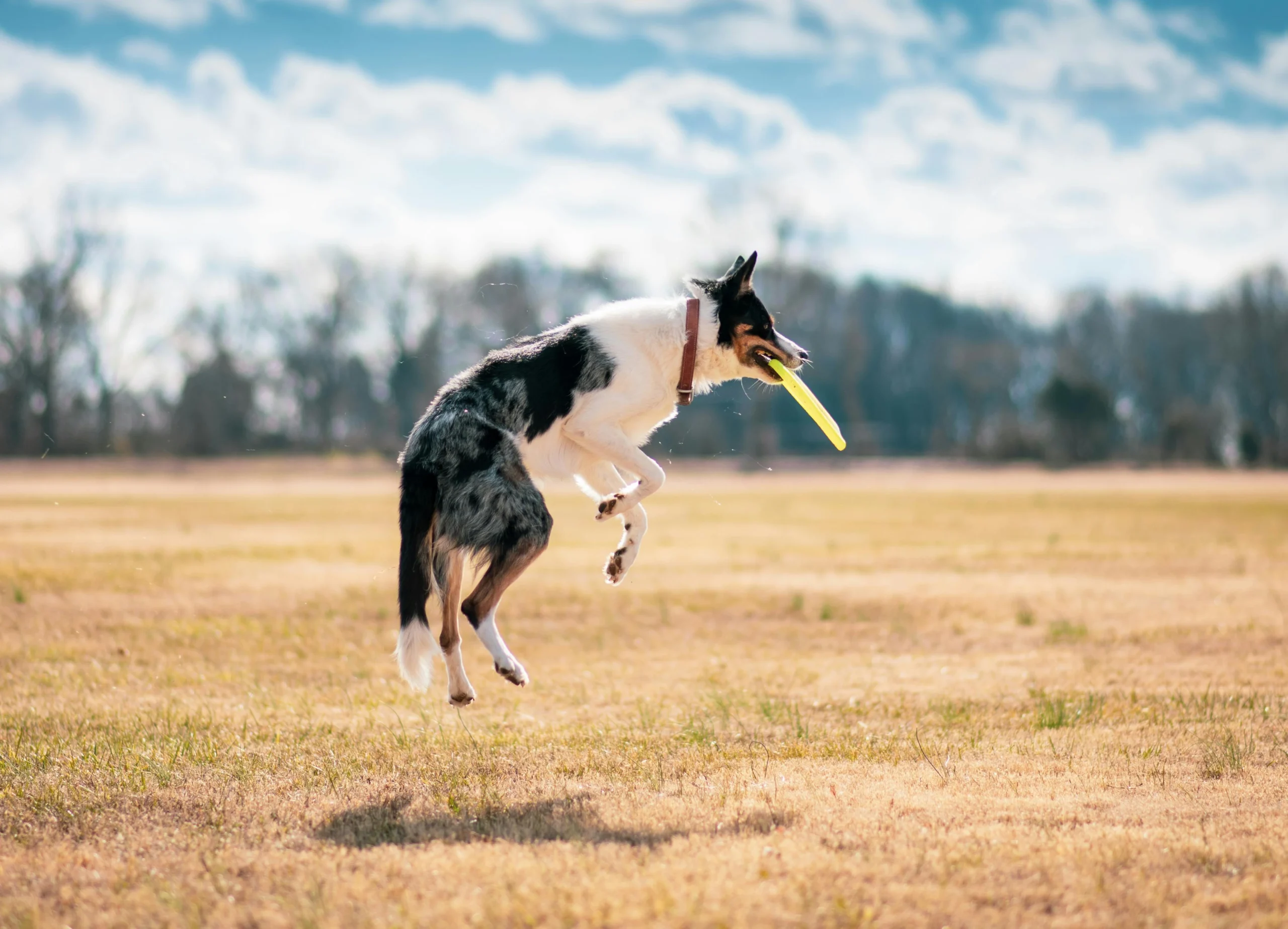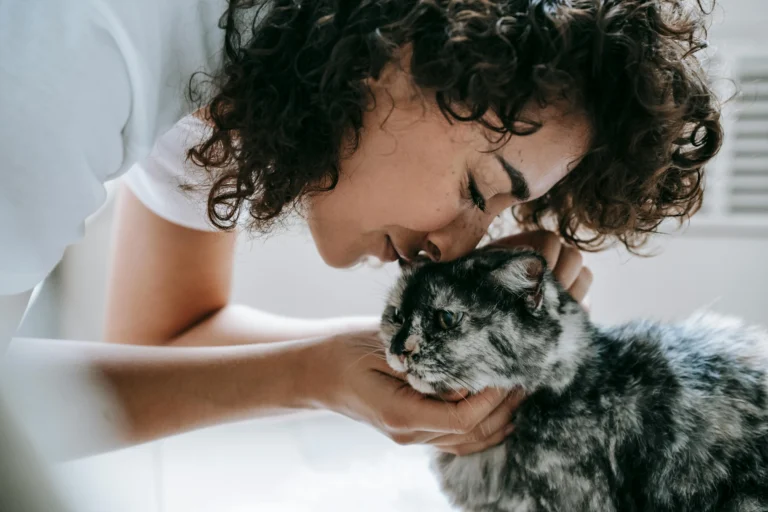Senior Dog Exercise Routine: 7 Safe Activities for Aging Joints
Introduction:
As our beloved canine companions age, maintaining their physical health becomes increasingly crucial. A well-designed senior dog exercise routine can significantly improve quality of life, reduce joint pain, and extend your furry friend’s golden years. Research indicates that 80% of dogs over eight years old show signs of arthritis, making appropriate exercise modifications essential for aging pets.
Creating an effective senior dog exercise routine isn’t about reducing activity entirely, it’s about adapting movements to support aging joints while maintaining cardiovascular health and mental stimulation. This comprehensive guide will walk you through seven scientifically-backed, low-impact activities that keep senior dogs healthy, happy, and mobile.
Table of Contents
Understanding Your Senior Dog’s Exercise Needs
The Science Behind Aging Canine Joints
As dogs age, their joints undergo natural changes that affect mobility and comfort. Cartilage begins to thin, synovial fluid decreases, and muscle mass naturally declines, typically by 3-8% per year after age seven. These physiological changes don’t mean your senior dog should become sedentary; rather, they require a thoughtful approach to exercise that supports joint health while preventing injury.
Veterinary orthopedic specialists emphasize that consistent, moderate exercise helps maintain joint lubrication and muscle strength. A properly structured senior dog exercise routine can reduce inflammation markers by up to 40% while improving overall mobility scores in elderly dogs.
Recognizing Signs Your Dog Needs Modified Exercise
Before implementing any senior dog exercise routine, it’s essential to recognize when your dog requires activity modifications:
- Stiffness after rest periods, particularly in the morning
- Reluctance to jump onto furniture or climb stairs
- Decreased enthusiasm for previously enjoyed activities
- Limping or favoring certain limbs
- Taking longer to recover from exercise sessions
These indicators don’t signal the end of an active lifestyle; they simply mean it’s time to adapt your approach to better support your aging companion’s needs.
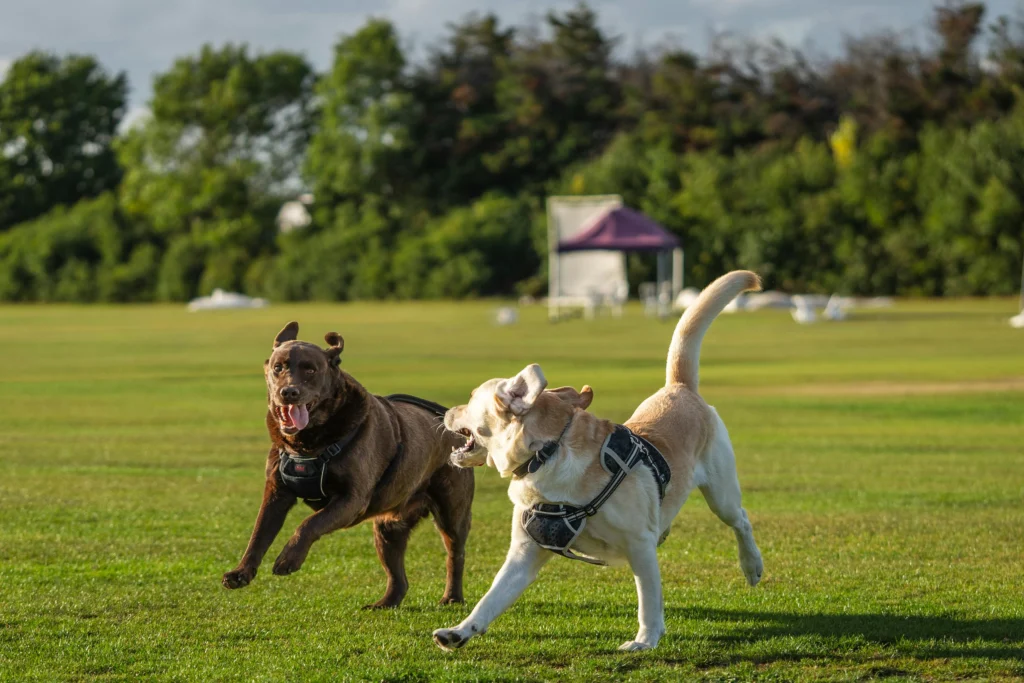
The 7 Safe Activities for Your Senior Dog Exercise Routine
1. Controlled Leash Walks: The Foundation of Senior Fitness
Controlled leash walks form the cornerstone of any effective senior dog exercise routine. Unlike free-roaming play, leash walks allow you to monitor pace, duration, and terrain while ensuring your dog maintains consistent, low-impact movement.
Implementation Strategy:
- Start with 10-15 minute sessions twice daily
- Choose flat, even surfaces to reduce joint stress
- Allow for frequent sniffing breaks, mental stimulation is equally important
- Gradually increase duration based on your dog’s response
Research from the American Veterinary Medical Association shows that dogs maintaining regular walking routines experience 35% better joint mobility compared to sedentary seniors. The key is consistency rather than intensity.
Terrain Considerations: Soft surfaces like grass or sand provide natural cushioning for aging joints. Avoid concrete and asphalt during hot weather, as these surfaces can stress paw pads and retain heat. Consider investing in protective booties if sidewalk walking is unavoidable.
2. Swimming: The Ultimate Low-Impact Exercise
Swimming represents the gold standard for senior dog exercise routines due to its remarkable joint-friendly properties. Water provides natural buoyancy, reducing weight-bearing stress by up to 90% while offering complete muscle engagement.
Benefits for Senior Dogs:
- Zero impact on joints while maintaining cardiovascular fitness
- Natural resistance training for muscle maintenance
- Improved circulation and reduced inflammation
- Enhanced range of motion in arthritic joints
Getting Started: Begin with shallow water where your dog can touch bottom, gradually progressing to deeper areas as confidence builds. Many communities offer canine hydrotherapy facilities with heated pools and trained professionals—an excellent investment for dogs with significant mobility challenges.
Pool sessions should last 10-20 minutes initially, with careful monitoring for fatigue. Unlike land-based exercise, dogs may not show obvious signs of tiredness while swimming, making supervision crucial.
3. Gentle Treadmill Training: Weather-Independent Fitness
Treadmill training offers unprecedented control over your senior dog exercise routine, allowing precise speed and duration adjustments regardless of weather conditions. This controlled environment is particularly valuable for dogs with mobility limitations.
Training Protocol:
- Begin with the treadmill stationary, allowing familiarization
- Start at 0.5-1.0 mph for 5-minute sessions
- Gradually increase speed to a comfortable walking pace (typically 2-3 mph for most seniors)
- Never exceed 15-20 minutes per session
Studies indicate that treadmill exercise can improve gait symmetry in senior dogs by up to 25% within six weeks of consistent training. The key advantage lies in maintaining a steady pace without the unpredictability of outdoor terrain.
Safety Considerations: Always supervise treadmill sessions and ensure emergency stop access. Dogs should never be tethered to moving treadmills, and sessions should end at the first sign of fatigue or distress.
4. Therapeutic Massage and Stretching: Flexibility and Comfort
While not traditional exercise, therapeutic massage and gentle stretching form crucial components of a comprehensive senior dog exercise routine. These activities improve circulation, reduce muscle tension, and enhance joint mobility.
Basic Massage Techniques:
- Use gentle, circular motions along muscle groups
- Focus on areas showing stiffness or tension
- Maintaining light pressure, deep tissue massage requires professional training
- Sessions should last 10-15 minutes and always end on a positive note
Passive Range of Motion Exercises: Gentle limb manipulation helps maintain joint flexibility. Work with your veterinarian to learn appropriate techniques for your dog’s specific needs. These exercises are particularly beneficial for dogs with arthritis or those recovering from injury.
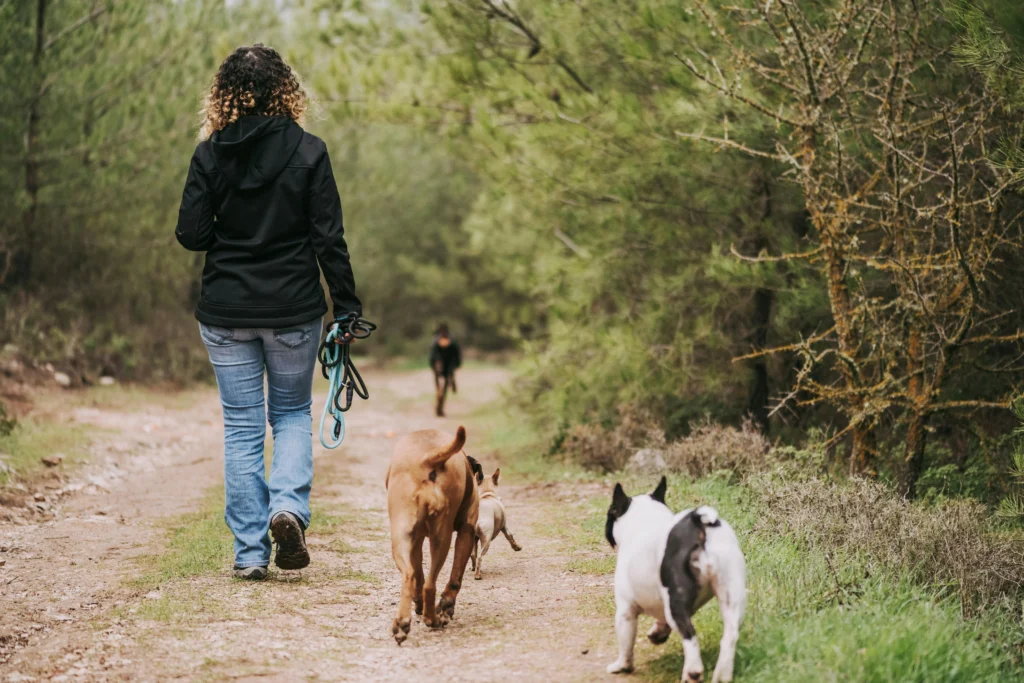
5. Mental Stimulation Games: Exercise for the Mind
A complete senior dog exercise routine must address cognitive health alongside physical fitness. Mental stimulation can be as tiring as physical exercise while being completely joint-friendly.
Engaging Activities:
- Puzzle feeders and treat-dispensing toys
- Hide-and-seek games with favorite treats
- Learning new, simple commands or tricks
- Scent work activities using natural instincts
Research demonstrates that cognitively engaged senior dogs maintain better overall health and may experience slower cognitive decline. These activities can easily be incorporated into daily routines without adding physical stress.
6. Controlled Play Sessions: Social and Physical Benefits
Structured play remains important for senior dogs but requires careful management. A well-planned senior dog exercise routine includes controlled interactions that provide social stimulation without overwhelming aging bodies.
Modification Strategies:
- Limit play sessions to 10-15 minutes
- Choose playmates of similar energy levels
- Supervise interactions to prevent overexertion
- Provide rest areas and water access
- End sessions before fatigue sets in
Young, energetic dogs can unintentionally overwhelm seniors, so careful playmate selection is essential. Consider organized senior dog playgroups in your community for age-appropriate socialization.
7. Balance and Coordination Exercises: Stability Training
Balance exercises help maintain proprioception, the body’s awareness of position in space, which naturally declines with age. These activities strengthen core muscles and improve stability, reducing fall risk.
Simple Balance Exercises:
- Standing on slightly uneven surfaces (textured mats or wobble boards)
- Slow, controlled movements over low obstacles
- “Sit-to-stand” repetitions with treats as motivation
- Walking on different textures (grass to gravel transitions)
Physical therapy studies show that senior dogs practicing balance exercises demonstrate 30% fewer falls and better confidence in movement. These activities require minimal space and equipment while providing significant benefits.
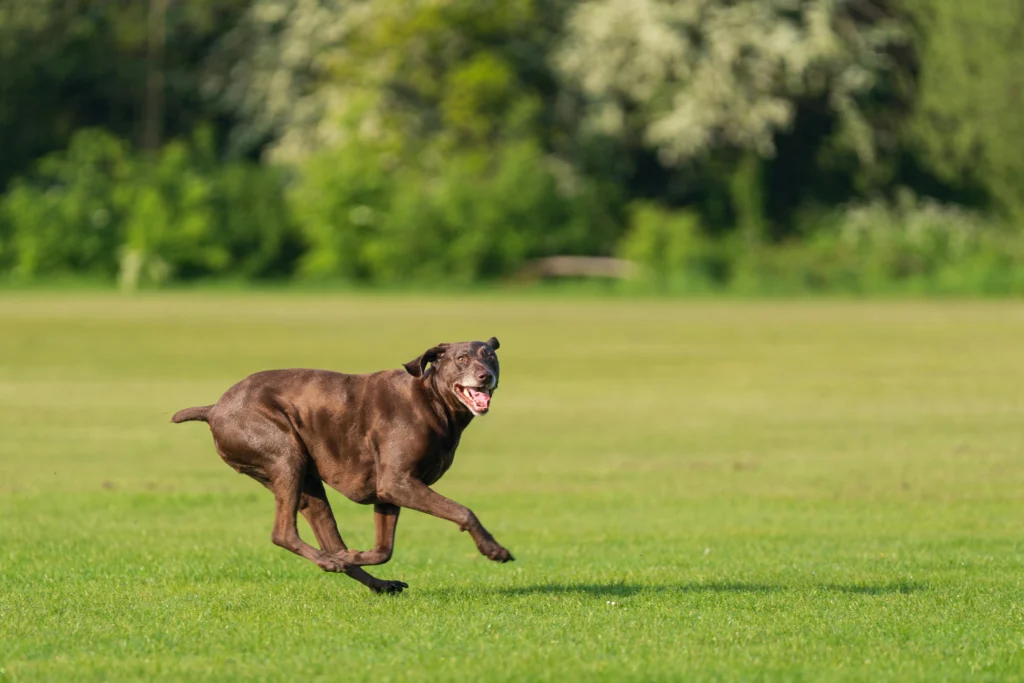
Creating Your Customized Senior Dog Exercise Routine
Assessing Your Dog’s Individual Needs
Every senior dog is unique, requiring personalized approaches to exercise. Consider these factors when developing your senior dog exercise routine:
Health Status: Dogs with diagnosed conditions like arthritis, hip dysplasia, or heart disease need specialized exercise protocols developed with veterinary guidance. What works for one senior may be inappropriate for another.
Breed Considerations: Large breeds typically age faster than small dogs, often requiring activity modifications by age six or seven. Conversely, smaller breeds may maintain higher activity levels well into their teens but need protection from overexertion.
Previous Activity Level: Lifelong athletes may adapt better to modified routines than previously sedentary dogs. However, couch potatoes shouldn’t be excluded from gentle activity programs; they often benefit most from consistent, low-impact exercise.
Weekly Schedule Template
A sustainable senior dog exercise routine requires structure while maintaining flexibility. Consider this template as a starting point:
Monday/Wednesday/Friday: 20-minute controlled walks + 10 minutes mental stimulation Tuesday/Thursday: Swimming or treadmill sessions (15-20 minutes) Saturday: Extended gentle walk (30 minutes) + massage session Sunday: Rest day or light play/stretching only
Adjust frequency and intensity based on your dog’s response. Some seniors thrive on daily activity, while others benefit from alternate-day schedules with complete rest periods.
Monitoring Progress and Adjusting Activities
Successful senior dog exercise routine implementation requires ongoing assessment and modification. Track these indicators:
Positive Signs:
- Improved morning mobility
- Increased enthusiasm for activities
- Better sleep quality
- Maintained or improved appetite
- Stable weight management
Warning Signs:
- Increased stiffness or limping
- Reluctance to participate in previously enjoyed activities
- Excessive panting or difficulty recovering
- Behavioral changes or increased irritability
- Appetite changes
Document your observations in a simple log, noting activity type, duration, and your dog’s response. This information proves invaluable during veterinary consultations and helps optimize your routine.
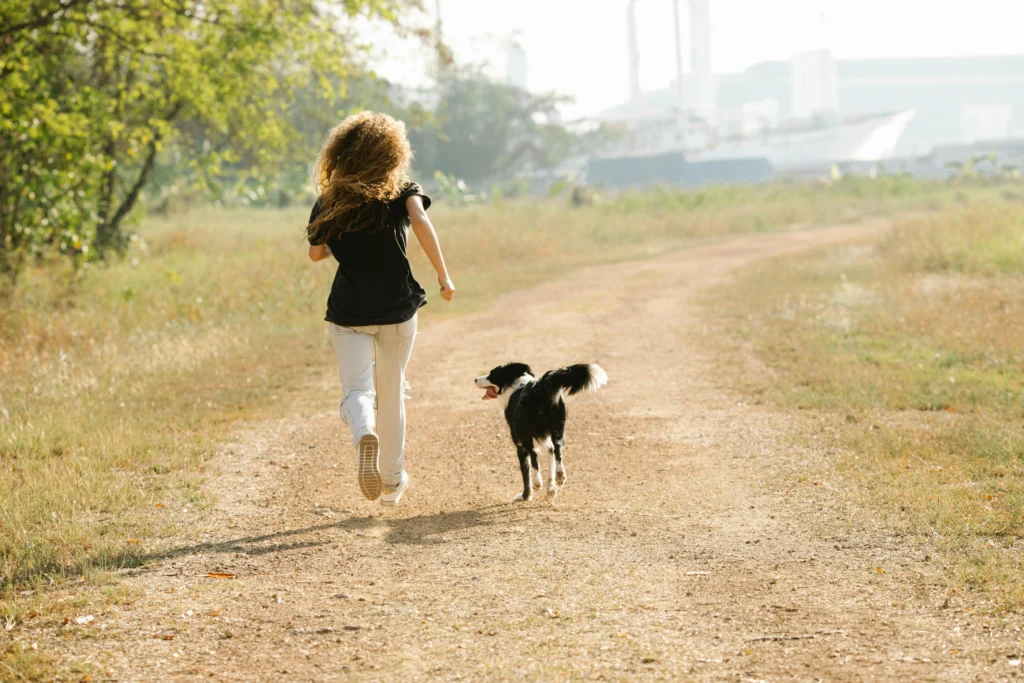
Professional Support and Medical Considerations
Working with Your Veterinary Team
A successful senior dog exercise routine should always involve professional veterinary guidance. Your veterinarian can identify underlying conditions, recommend appropriate activities, and monitor progress through regular check-ups.
Many veterinary practices now offer specialized senior wellness programs that include:
- Comprehensive orthopedic assessments
- Pain management strategies
- Nutritional counseling for active seniors
- Referrals to canine physical therapists
When to Seek Specialized Help
Consider professional canine rehabilitation services if your dog shows:
- Persistent lameness or mobility issues
- Rapid decline in activity tolerance
- Signs of chronic pain despite medication
- Difficulty with basic movements like standing or walking
Canine physical therapists can design targeted senior dog exercise routines that address specific conditions while maximizing quality of life.
Nutrition and Hydration for Active Seniors
Supporting Exercise with Proper Nutrition
An effective senior dog exercise routine must be supported by appropriate nutrition. Senior dogs have changing metabolic needs that affect their ability to maintain muscle mass and recover from exercise.
Key Nutritional Considerations:
- High-quality protein to maintain muscle mass (25-30% of diet)
- Omega-3 fatty acids for joint health and inflammation reduction
- Appropriate caloric intake to maintain ideal body weight
- Adequate hydration before, during, and after exercise
Supplements for Joint Health: While not replacements for veterinary care, certain supplements can support joint health in active seniors:
- Glucosamine and chondroitin for cartilage support
- Fish oil for anti-inflammatory effects
- Turmeric for natural pain relief (with veterinary approval)
Always consult your veterinarian before adding supplements to ensure they don’t interact with existing medications.
Environmental Modifications for Success
Creating a Senior-Friendly Exercise Environment
Your home environment plays a crucial role in supporting your senior dog exercise routine. Simple modifications can enhance safety and comfort:
Indoor Modifications:
- Non-slip rugs on smooth floors
- Ramps or steps to furniture and vehicles
- Orthopedic bedding for joint support
- Easy access to water stations
Outdoor Considerations:
- Secure, level exercise areas
- Shade and shelter options
- Appropriate footing materials
- Easy entry and exit points
These environmental supports help senior dogs maintain independence while reducing injury risk during exercise activities.
Technology and Tools for Senior Dog Exercise
Helpful Equipment for Your Senior Dog Exercise Routine
Modern technology offers numerous tools to enhance senior dog exercise routines:
Fitness Tracking:
- Activity monitors designed for dogs
- GPS collars for safe outdoor adventures
- Apps for logging exercise and symptoms
Mobility Aids:
Recovery Tools:
- Cooling mats for post-exercise comfort
- Therapeutic toys for gentle play
- Elevated feeders to reduce strain
While not essential, these tools can significantly improve the exercise experience for both you and your senior dog.
Seasonal Considerations for Year-Round Fitness
Adapting Your Senior Dog Exercise Routine Seasonally
Climate changes require modifications to maintain consistent senior dog exercise routines:
Summer Adaptations:
- Exercise during cooler morning or evening hours
- Provide additional water and shade
- Consider indoor alternatives during heat waves
- Monitor for signs of overheating more carefully
Winter Modifications:
- Protect paws from salt and cold surfaces
- Warm up joints before outdoor exercise
- Shorten outdoor sessions in extreme cold
- Maintain indoor activity options
Spring and Fall Opportunities: These moderate seasons offer ideal conditions for extending senior dog exercise routines while building fitness reserves for more challenging weather periods.
Building Long-Term Success
Maintaining Motivation and Consistency
The most effective senior dog exercise routine is one that’s consistently followed. Maintain motivation through:
Goal Setting:
- Establish realistic, measurable objectives
- Celebrate small improvements
- Focus on quality of life over performance metrics
Community Support:
- Join senior dog owner groups
- Share experiences and tips with other pet parents
- Consider group classes designed for senior dogs
Professional Guidance:
- Schedule regular veterinary check-ups
- Work with certified canine fitness professionals
- Stay updated on new research and techniques
Remember that the goal isn’t to turn back the clock but to maximize comfort, mobility, and happiness during your dog’s golden years.
Conclusion
Developing and maintaining a thoughtful senior dog exercise routine represents one of the most impactful ways to enhance your aging companion’s quality of life. The seven activities outlined—controlled leash walks, swimming, gentle treadmill training, therapeutic massage, mental stimulation, controlled play, and balance exercises—provide a comprehensive framework for supporting senior dogs safely and effectively.
Success lies not in the intensity of activities but in their consistency, appropriateness, and adaptation to your dog’s individual needs. Regular veterinary consultation, careful monitoring, and willingness to adjust approaches ensure that your senior dog exercise routine evolves with your pet’s changing requirements.
Remember that every day of comfortable, confident movement you help maintain is a gift to your senior dog. These golden years can be filled with joy, exploration, and connection when supported by thoughtful exercise practices that honor both your dog’s history as an active companion and their current needs as a cherished senior family member.
The investment in a proper senior dog exercise routine pays dividends in extended mobility, improved comfort, and precious additional time with your beloved pet. Start slowly, stay consistent, and celebrate every small victory along the journey toward optimal senior dog wellness.
Frequently Asked Questions
How often should I exercise my senior dog?
Most senior dogs benefit from daily gentle exercise, but frequency depends on individual health status and mobility. Start with 2-3 short sessions per week and gradually increase based on your dog’s response. A typical senior dog exercise routine includes 20-30 minutes of activity daily, split into shorter sessions. Always consult your veterinarian for personalized recommendations based on your dog’s specific health conditions.
What are the signs that my senior dog is getting too much exercise?
Watch for excessive panting that doesn’t subside after 10-15 minutes of rest, increased stiffness lasting more than a day after exercise, reluctance to participate in previously enjoyed activities, limping or favoring certain limbs, and changes in appetite or sleep patterns. If you notice these signs, reduce the intensity and duration of your senior dog exercise routine and consult your veterinarian.
Can senior dogs with arthritis still exercise safely?
Yes, dogs with arthritis often benefit greatly from appropriate exercise, which helps maintain joint mobility and muscle strength. Low-impact activities like swimming, controlled walks on soft surfaces, and gentle stretching are typically well-tolerated. The key is working with your veterinarian to develop a senior dog exercise routine that accommodates your dog’s specific condition and may include pain management strategies.
How do I know if my senior dog exercise routine is working?
Positive indicators include improved morning mobility, maintained or increased enthusiasm for activities, better sleep quality, stable appetite, appropriate weight management, and overall improved mood. Your dog should show gradual improvements in stamina and confidence over 4-6 weeks of consistent activity. Keep a simple log to track progress and share observations with your veterinarian.
What’s the difference between exercising senior small dogs versus large dogs?
Large breed dogs typically age faster and may need activity modifications by age 6-7, while small dogs may maintain higher activity levels into their teens. Large seniors often benefit from shorter, more frequent sessions to prevent joint stress, while small dogs may need protection from overexertion despite their enthusiasm. Regardless of size, any senior dog exercise routine should be tailored to individual health status rather than breed stereotypes.
Should I stop exercising my senior dog if they seem tired?
Mild fatigue after exercise is normal, but you should stop immediately if your dog shows signs of distress, excessive panting, or difficulty recovering. The goal of a senior dog exercise routine is gentle conditioning, not exhaustion. Allow adequate rest between sessions and never force participation. If your dog consistently seems too tired for previously tolerated activities, consult your veterinarian to rule out underlying health issues.
How can I exercise my senior dog indoors during bad weather?
Indoor options include treadmill walking, gentle stretching and massage, mental stimulation games, slow-paced hallway walks, and simple obedience practice. Many components of an effective senior dog exercise routine can be adapted for indoor use. Consider puzzle toys, treat-dispensing games, and basic commands practice to provide both physical and mental stimulation when outdoor exercise isn’t possible.
When should I consult a veterinarian about my senior dog’s exercise needs?
Schedule a veterinary consultation before starting any new senior dog exercise routine, especially if your dog has been sedentary or has diagnosed health conditions. Also consult if you notice persistent lameness, difficulty with basic movements, rapid changes in activity tolerance, signs of chronic pain, or behavioral changes related to movement. Regular senior wellness exams help ensure exercise plans remain appropriate as your dog ages.

